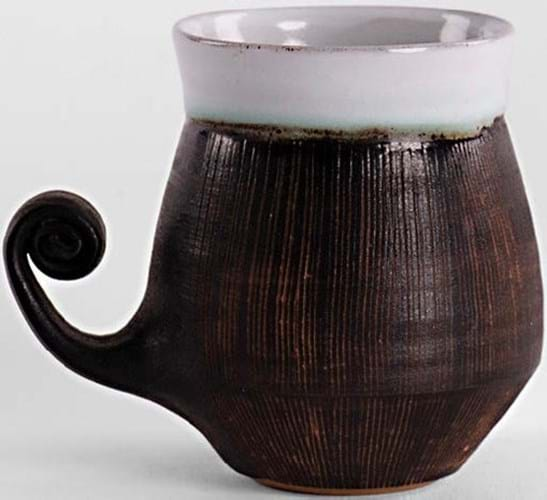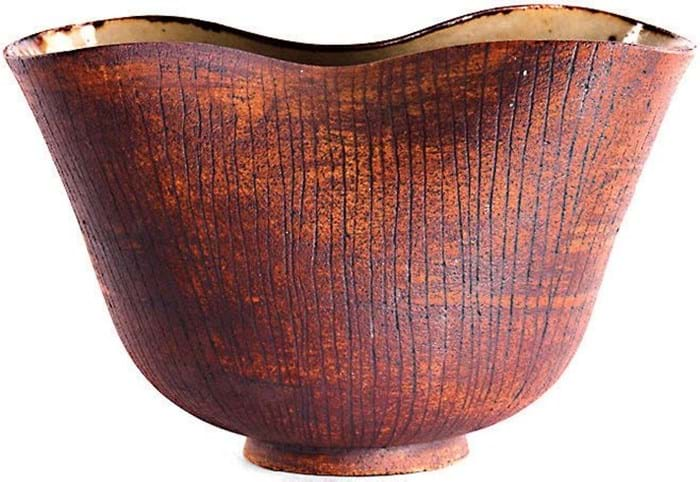
How much can the fortunes of an artist change with the sale of one collection?
The Fine Art Society (FAS) is about to put this question to the test with a 100-object single-owner collection of the works of studio potter Waistel Cooper (1921-2003).
The sale takes place through four exhibitions, taking advantage of FAS’s dual locations in London and Edinburgh. The first two take place now, running until February 19, and a further pair is scheduled for the end of the year.
Long regarded as a lesser version or even an imitator of Modern British pottery giants such as Hans Coper, the Ayr-born Cooper has recently been rising in collectors’ esteem.
FAS might not have been first to see the trend, but the gallery is now well placed to capitalise on it – and see just how far interest in Cooper will go.
“We’ve seen his prices start to be more competitive at auction but we still don’t feel that he has his fair place in the canon of artists and potters of the mid-20th century,” says Florrie Evans, director of the London gallery.
In late 2020 Cooper’s auction record was broken twice in the space of eight days; the second time for a 14in (36cm) lugged stoneware vessel knocked down for £3500 at Adam Partridge of Macclesfield.

Another of the Waistel Cooper works for sale from The Fine Art Society shows is Scroll cup, 1950s, Merryfield, Porlock, stoneware, 3 x 2½ x 3½in (8 x 6.5 x 9cm) high, £3500.
Considering the huge emphasis on British pottery in the market in general – which reached new levels with the Phillips/Maak sale of the John Driscoll collections last year – the release of a tranche of fresh-to-the-market Cooper pots will surely attract attention.
FAS is ready to meet demand with pots priced well into the five figures. At the top end is a 1960s dual-form vase offered for £25,000. Like many of the higher priced works in the show, this vase is comparatively large, measuring 14in (36cm) high.
“You have to look at the ceramic market as a whole,” Evans says on the gallery’s approach to pricing the unprecedented collection.
“So many of his pieces are unique and we were in a unique position when we acquired them. With so many one-off or monumental works, looking at aesthetic equivalents was important, including what you would pay for works by a contemporary ceramicist.”

Another of the Waistel Cooper works for sale from The Fine Art Society shows is Clam vase, 1960s, Culbone, stoneware, 5 x 7 x 4½in (12 x 19 x 11.5cm), £8000.
The series of shows features works from his four main periods: the 1940s when he worked in Iceland decorating earthenware in colourful slips; the 1950s when he returned to the UK and began to exhibit more widely; his most celebrated period, the 1960s when he developed a distinctive look for his pottery with rough surfaces, earthy organic colours and glazed interiors; and finally the 1970s, at which point he moved to Devon, producing more abstract pieces.
The collection was amassed by a Scottish woman who met Cooper in 1946 when he came to her fish and chips shop in Edinburgh. By the end of his meal, the story goes, he had invited her to his next show and the pair became life-long friends. Her daughter continued to build the collection, most of which came to the gallery last year.
While prices for a Cooper may have risen since 1946, they are still not a patch on what, say, a Coper can command. Quite apart from the half-million-pound-plus result at the Driscoll sale last year, his smaller pieces easily fetch five figures on the open market.
Yet it would be a mistake to think of Cooper as an inferior artist, Evans says.
“In his lifetime he was on a parr with Coper and Rie and exhibited alongside them,” she says.
“Because he became withdrawn in the 1970s when he moved to Devon he was a bit forgotten. We hope our exhibition will bring Cooper back into the limelight and give him the place in the canon he deserves.”














